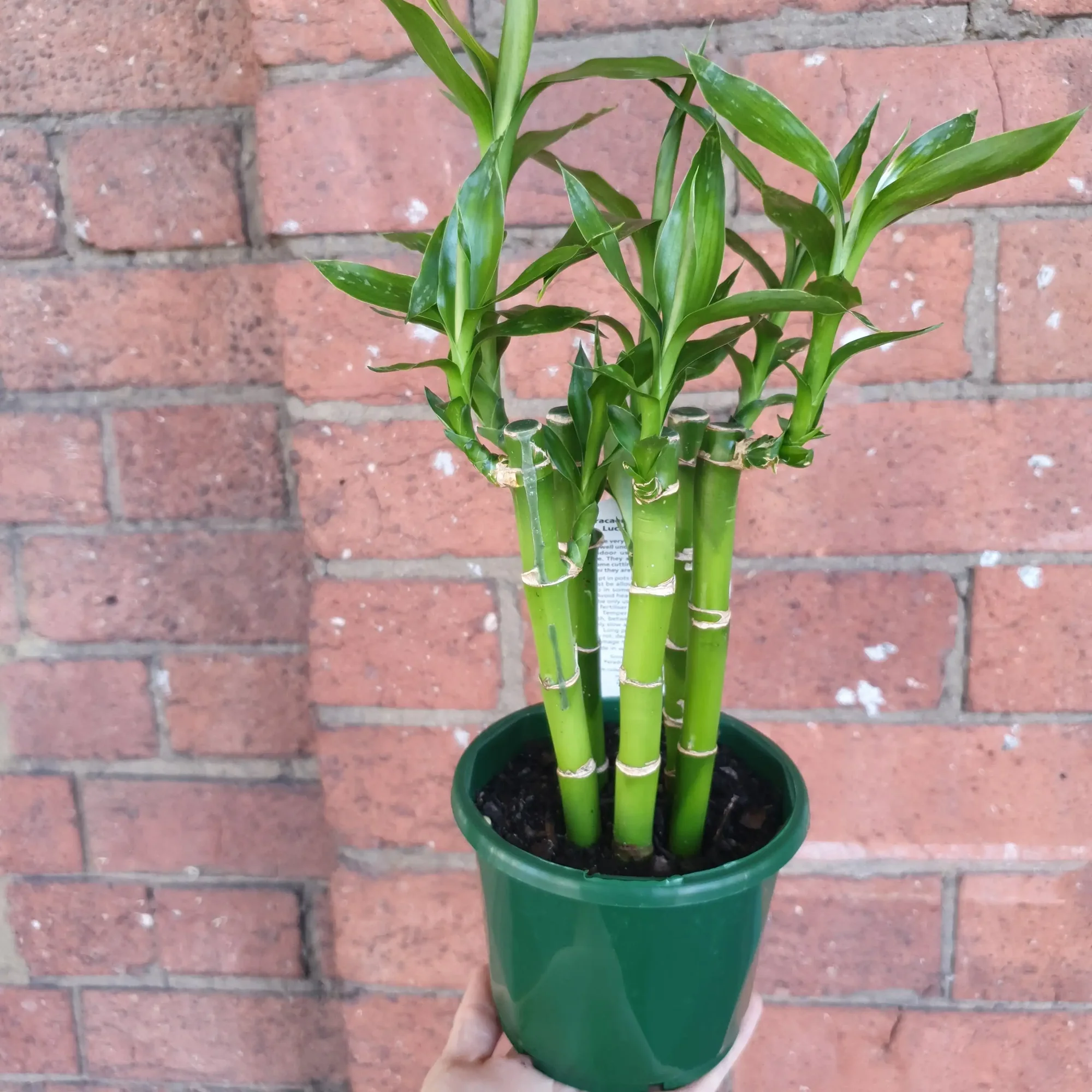Lucky Bamboo Plant: Your Guide to Thriving Indoor Greenery
- ankitkumar0612002
- Mar 25
- 3 min read
🌱 1. Introduction & Overview
Lucky bamboo, despite its name, isn't actually bamboo! It's a member of the Dracaena sanderiana family, a tropical plant native to Cameroon. Its upright, slender stems and vibrant green foliage make it a popular choice for homes and offices worldwide. Known for its ease of care and purported feng shui benefits, lucky bamboo is a fantastic option for both beginners and seasoned plant enthusiasts looking for a low-maintenance addition to their indoor jungle. This comprehensive guide will cover everything you need to know to successfully grow and care for your lucky bamboo, answering common questions and addressing frequent problems.
✅ 2. Benefits of Lucky Bamboo Plant
Beyond its aesthetic appeal, lucky bamboo offers several benefits:
Air Purification: While not as potent as some other air-purifying plants, it contributes to cleaner indoor air.
Stress Reduction: The presence of greenery has been shown to reduce stress and improve mood. The calming effect of lucky bamboo can create a more peaceful atmosphere.
Decorative Value: Its elegant stems and versatile growth habit allow for creative displays in various containers and arrangements, adding a touch of nature to any space.
Feng Shui Symbolism: In many cultures, it symbolizes good luck, prosperity, and happiness.
Lucky bamboo is primarily an indoor plant and thrives in the controlled environment of a home or office.
🐶🐱 3. Is Lucky Bamboo Plant Pet-Friendly?
Yes, lucky bamboo is generally considered non-toxic to cats and dogs. However, ingestion of large quantities of any plant material can cause mild gastrointestinal upset. Keep your lucky bamboo out of reach of pets who may be prone to chewing on plants to prevent this.
🌞💧 4. Basic Care Requirements
☀️ Lighting
Lucky bamboo tolerates low to bright, indirect light. Avoid direct sunlight, which can scorch its leaves. Morning sun is acceptable, but afternoon sun should be filtered.
💦 Watering
Water your lucky bamboo when the top inch of soil (or the water in the container) feels dry. Don't let the roots sit in stagnant water, as this can lead to root rot. The frequency of watering depends on several factors, including the size of the container, the ambient temperature, and humidity. For plants in water, change the water completely every week to prevent bacterial growth and replenish nutrients.
🌱 Nutrition
Use a balanced liquid fertilizer diluted to half strength every 2-4 weeks during the growing season (spring and summer). Avoid over-fertilizing, which can damage the roots.
🌡️ Temperature
Lucky bamboo thrives in average room temperatures between 65-80°F (18-27°C). Avoid placing it near drafty windows or air vents.
🍃 5. How to Keep Leaves Healthy
Yellowing Leaves: This often indicates overwatering, underwatering, or nutrient deficiency. Adjust watering and fertilization accordingly. Trim off severely yellowed leaves.
Browning Leaves: This could be caused by too much direct sunlight, dry air, or low humidity.
Pest Issues: Ants are attracted to the moisture around the base. Clean the container thoroughly, ensure proper drainage, and use an ant bait away from the plant.
🌿 6. Similar Plants
Plants with similar care needs include: Spider plants, snake plants, and peace lilies.
❓ 7. Common FAQs
How fast does Lucky Bamboo Plant grow? Growth rate depends on conditions; it can grow several inches per year under ideal conditions.
Can Lucky Bamboo Plant survive in low light? Yes, but growth will be slower, and the leaves may become paler.
How much water should be used? Only enough to keep the roots moist, not soggy. For plants in water, ensure the roots are partially submerged, not fully submerged.
How often should I water it (especially if the water dries up quickly)? Water when the top inch of soil or the water is dry. If it dries up quickly, use a larger container or increase watering frequency.
Should the stem be fully submerged? No, partially submerged is best.
Is soil or water better for growing lucky bamboo? Both are possible, but many find water propagation easier.





Comments